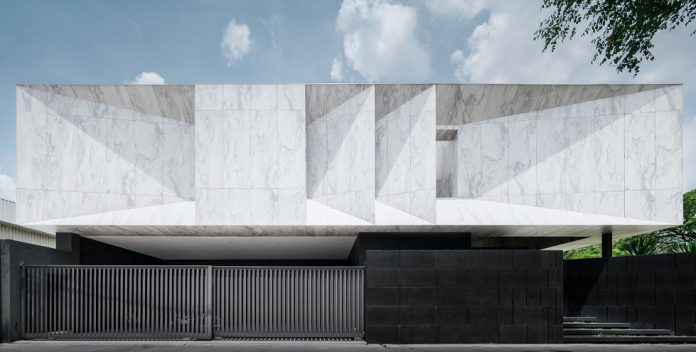If we think of marble, the first things that come to our minds are the sculptures made by artists like Michelangelo and Canova. Alternatively, we may think about the Greek temples, the incredible Roman architectures that are known to last… But what about the present time?
There certainly are the prestigious indoor spaces of hotels and stores, our modern sculptors, and new, incredible technologies that allow us to experiment with marble, now more than ever.
Today, we would like to focus on one particular use of marble of which we would not immediately think, however, characterized by incredible beauty, demonstrating to us, once again, how marble is a versatile, elegant, and timeless material: let’s find out how this stone is used to build up extraordinary indoor spaces and facades!
Marble indoor spaces
Marble is the perfect material to create the indoor spaces of any kind of setting and matching the most varied styles: from the modern to the ancient style, from pop to minimalism, marble emphasizes the beauty of any kind of room, detail, and decorative item.
Furthermore, it lights up the spaces and gives them a touch of timeless elegance, of which we could never get tired. We should also consider the technical qualities of this material: extremely resistant to impact and signs of wear, long-lasting, and requiring little maintenance, it is simply the perfect choice to create from scratch, or renovate, your indoor spaces.
Even the sole insertion of marble finish and ornaments can actually make a difference, in case you don’t want to use this material for floor or wall coverings, although, undoubtedly, its beauty is furtherly amplified when it is used for wide surfaces.
It is no coincidence that some of the spaces in which it is mostly used are living rooms or entrance halls: alternatively, it is largely used in bathrooms (also for showers, sinks, and bathtubs), stairs and staircases, and in the kitchen, for kitchen tops or central islands. As far as outdoor spaces are concerned, instead, marble is used to create statues, fountains, and columns, and for the covering of swimming pools, entrance avenues, or gazebos.
The wide range of colors, grains, nuances, and types of processing in which it comes, make marble an extremely versatile material for all purposes when it comes to interior design, all of them, really!
Marble facades
When it comes to the external cladding of buildings (either public or private), marble has a prestigious role, especially for luxury destinations like hotels or villas. In fact, not only has it an everlasting charm and brightness, but it is also a very functional stone that adapts well to any need, including the more contemporary ones.
Therefore, the use of marble is advisable for outer walls in order to regulate the heat, light and air exchanges between the indoor and outdoor environments, consequently maximizing energy saving. Can it adapt to bad weather, though? Of course, as it is a natural, durable, and water-resistant stone! Moreover, it provides the thermal insulation of the building and preserves it from noise pollution, and allows to minimize the structural movements caused by temperature changes.
In this case, as well, the choice of the right type of marble changes according to the reference styles and tastes, but there are some particularly recommended varieties like Carrara or Calacatta marble (if you wish to stick with light tones, even though they require a routine maintenance to be protected from smog or other air pollutants), Travertino or Botticino marble, which are darker, so they require lower maintenance.
Source: www.marmomac.com






































